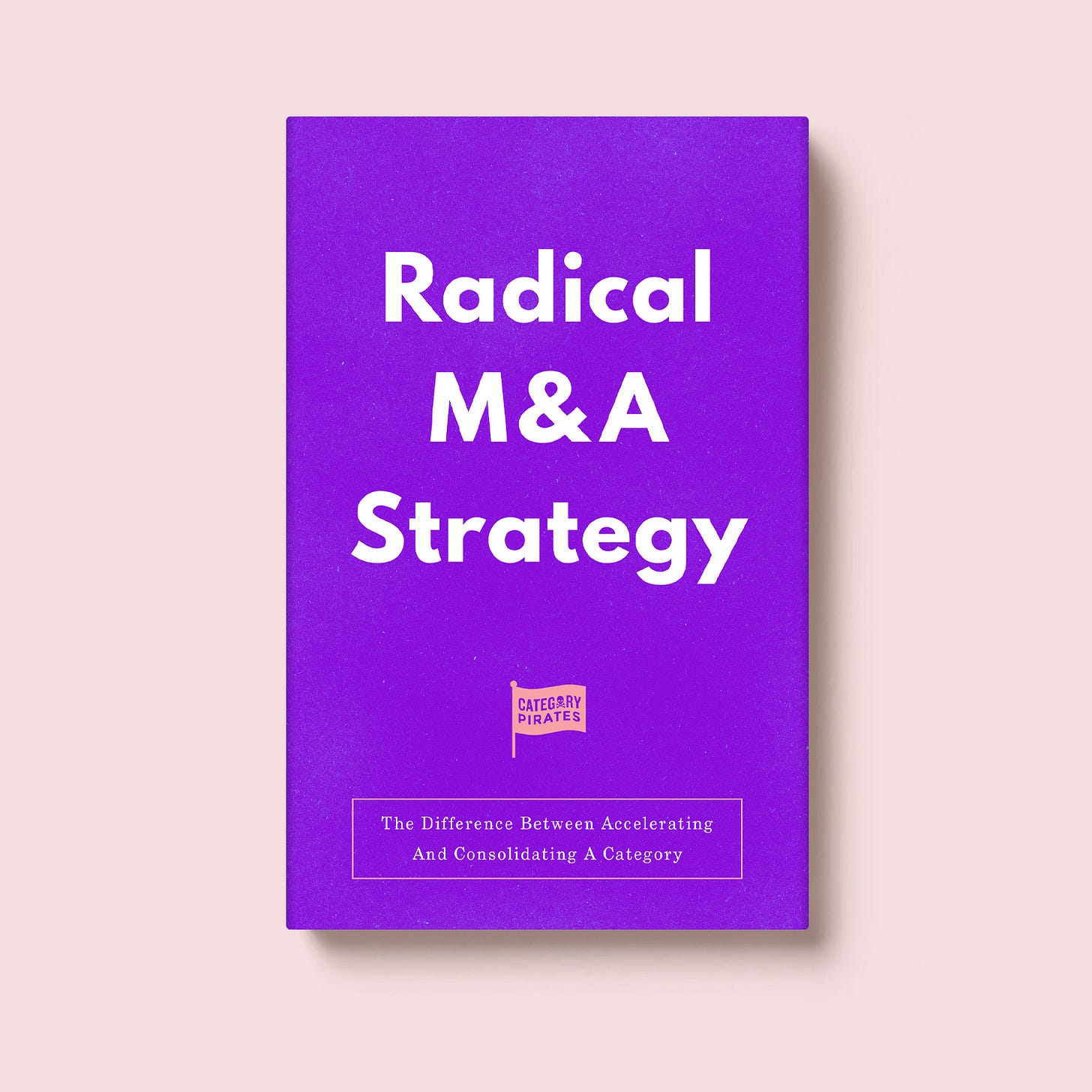Radical M&A Strategy: The Difference Between Accelerating and Consolidating A Category
Why it's worth paying a premium to own the Category King in the emerging or tangentially relevant category.
Arrrrr! 🏴☠️ Welcome to a 🔒 subscriber-only edition 🔒 of Category Pirates. Each week, we share radically different ideas to help you design new and different categories. For more: View the mini-book archive | Listen to a category design jam session | Dive into an audiobook | Enroll in the free Category Accelerator email course
Dear Friend, Subscriber, and Category Pirate,
In 2006, Google acquired YouTube for $1.6 billion.
At the time, YouTube was barely a year old with just 10 employees. And despite having more than 50 million users worldwide, the startup hadn’t generated any revenue—and didn’t look like it was going to for quite some time.
So why did Google bite?
If you were alive and paying attention to the startup/business world back then, you remember how much backlash and criticism Google received for acquiring such a small, unprofitable company for such a jaw-dropping amount. Wall Street, as well as many of the publications and journalists covering the story, thought Google executives had lost their minds. But fast-forward to 2019, and YouTube brought in $15 billion in advertising revenue—9x more just that year than what Google paid to acquire the site. (Google underpaid for YouTube.) And if YouTube continues at its current growth rate, it could reach $30 billion in revenue by the end of 2021 surpassing Netflix in revenue.
A similar situation happened in 2014, when Amazon acquired Twitch.tv for $970 million. Wall Street and mainstream media were confused as to why a retailer was buying a gaming streaming platform. But fast-forward 5 years, and it’s estimated Twitch generates roughly $300 million in revenue per year (a third of the total acquisition cost)—and that’s not including the “gaming Superconsumer data flywheel” Twitch provides Amazon, helping them sell more retail products to those specific types of customers. Not to mention the likelihood that the long-term-category value in streaming games is colossal. (Matey!)
And, of course, the same thing happened again in 2017 when Amazon acquired Whole Foods for a whopping $13.4 billion. At the time, very few people understood why Amazon would be buying “a grocery store” (it’s painfully obvious today). And yet, just shy of two years later, Amazon generated $18 billion to $20 billion in grocery-equivalent revenue in 2018.
Radical M&A: How To Buy The Future
Salesforce acquiring Slack for $27.7 billion...
Facebook acquiring WhatsApp for $19 billion...
Disney acquiring Pixar for $7.4 billion, Marvel for $4 billion, and Star Wars for $4 billion...
These are all prime examples of Radical M&A: paying a premium to own the Category King in the emerging or tangentially relevant category.
When a company like Salesforce shells out $27.7 billion for Slack, they aren’t buying the brand, the revenue, or the customer base today, as much as they are the company’s leadership position in a category they believe will be much bigger, and much more dominant tomorrow. And since we know Category Kings capture 76% of the economics of the category they own, if the “Company Communications” category continues to grow, it’s reasonable to assume the Category King (Slack) will reap the majority of the rewards.
Said differently: Salesforce didn’t just buy Slack. They bought the leadership position in the exciting, emerging category Slack dominated.
They bought the future. A very different future.
Category Acceleration vs Category Consolidation
At a high-level, there are 2 ways to think about acquisitions that companies make when trying to grow their revenues and category dominance:




